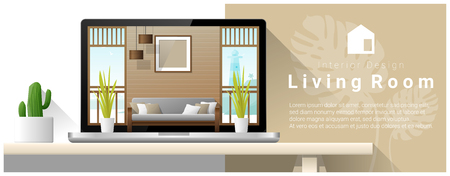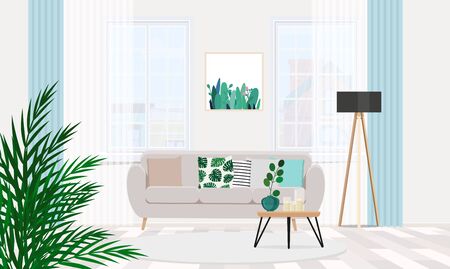Introduction: Embracing British Interiors
From the rolling hills of the countryside to the energetic heart of London, British homes tell a story of character, tradition, and evolving style. British cottages are renowned for their cosy nooks, exposed beams, and textured stonework, evoking warmth and rustic charm. In contrast, London flats often boast sleek lines, clever use of space, and an unmistakable urban edge, reflecting the city’s fast-paced lifestyle and diverse influences. Despite their differences, both types of homes share one essential element: the need for thoughtful lighting. The right table and floor lamps not only illuminate but also enhance architectural features, create mood, and bring a tailored sense of comfort to each unique setting. Whether you’re restoring a heritage cottage or personalising a chic city flat, lighting becomes an integral part of expressing your personal style while embracing the distinctive essence of British interiors.
Lighting Traditions: From Country Charm to Urban Elegance
British interiors span a delightful spectrum, with lighting traditions deeply rooted in their surrounding landscapes and lifestyles. When comparing the soft-spoken charm of rural cottages to the chic sophistication of London flats, the preferences for table and floor lamps reveal much about the nation’s diverse cultural identity. While country cottages often embrace warm, inviting glows that evoke comfort and nostalgia, city dwellers lean towards contemporary designs that maximise space and cater to a fast-paced lifestyle.
Cottage Warmth versus City Sleekness
In traditional British cottages, lighting is more than mere functionality—it’s an essential element of ambience. Think of low ceilings, exposed beams, and a palette of earthy tones; here, table lamps with fabric shades and antique finishes are favoured for their ability to diffuse gentle light and create pockets of cosiness. In contrast, London flats—often compact yet meticulously planned—call for lighting that is both purposeful and stylish. Sleek metal or glass lamps, adjustable features, and minimalist forms reflect urban sensibilities while providing versatility for multi-functional living spaces.
Comparative Table: Rural Cottages vs Metropolitan Flats Lighting Preferences
| Cottage (Rural) | Flat (Urban) | |
|---|---|---|
| Design Style | Vintage, Rustic, Handcrafted | Modern, Minimalist, Space-saving |
| Lamp Materials | Brass, Ceramic, Wood | Metal, Glass, Acrylic |
| Lampshade Type | Patterned Fabric, Pleated Linen | Sleek Drum Shades, Bold Colours |
| Lighting Quality | Warm & Ambient Glow | Crisp & Adjustable Lighting |
| Cultural Influence | Heritage, Countryside Nostalgia | Contemporary Design Trends |
The Cultural Thread in Lighting Choices
The British inclination towards layered lighting schemes speaks to a broader cultural appreciation for both heritage and innovation. In villages across the Cotswolds or Lake District, lamp choices are guided by tradition—echoing stories of family gatherings and timeless routines. Meanwhile, in cosmopolitan boroughs from Shoreditch to South Kensington, lighting becomes a tool for self-expression and adaptability. Whether one seeks the storybook magic of a countryside retreat or the sleek pragmatism of city life, understanding these nuanced differences ensures every table or floor lamp feels perfectly at home within its unique setting.

3. Selecting Table Lamps: Cozy Corners and Modern Nooks
When it comes to choosing table lamps, the key is to reflect both the character of a British cottage and the refined aesthetic of a London flat. In countryside cottages, where interiors are often layered with soft textiles, vintage finds, and rustic timber, opt for lamps with tactile bases such as glazed ceramic, weathered wood, or hammered metals. Shades in linen or tweed create a gentle glow, perfect for reading nooks or side tables by a roaring fire. Consider warm hues—sage green, muted rose, or classic cream—to harmonise with floral wallpapers and exposed beams.
For city dwellings, where space is at a premium and design leans towards minimalist efficiency, table lamps should serve both function and form. Sleek metal or glass bases paired with crisp white or geometric shades complement uncluttered spaces and contemporary furnishings. Look for adjustable arms or dimmable features to suit multi-purpose rooms—from compact desks in home offices to bedside tables in stylish studios.
Regardless of setting, pay attention to lamp scale; oversized bases may overwhelm a petite cottage alcove but can make a bold statement on an urban console. Likewise, smaller lamps create intimacy on kitchen counters or window sills in both environments. Ultimately, select designs that echo your room’s spirit: rustic charm for rural retreats and streamlined silhouettes for metropolitan living.
4. Floor Lamps: Bridging Space and Style
When navigating the unique interiors of British cottages and London flats, floor lamps emerge as a versatile design element that bridges space and style. These lighting fixtures offer both form and function, enabling homeowners to create atmosphere, highlight architectural features, or simply brighten up a forgotten corner. The secret lies in choosing the right lamp to fit both the proportions of your room and the distinctive character of your home.
Enhancing Space and Setting Moods
In a snug London flat, every inch matters—floor lamps with slender profiles or adjustable arms can be tucked behind sofas or beside reading chairs, delivering targeted illumination without encroaching on precious floor area. Meanwhile, in the generous living rooms of a countryside cottage, bolder lamp bases and expansive shades can establish focal points and infuse rustic charm, especially when paired with textured fabrics or antique finishes.
Matching Proportions to Room Size
| Lamp Style | Best for Cottages | Best for Flats |
|---|---|---|
| Arc Floor Lamp | Open-plan lounges; creates sweeping light over large tables | Corners of compact seating areas; adds drama without cluttering |
| Tripod Lamp | Spacious bedrooms; complements exposed beams or stone walls | Narrow hallways or entryways; lightweight yet striking presence |
| Tower/Uplighter | Dining spaces; gentle ambient glow for cosy gatherings | Living rooms; verticality draws eyes upward in low-ceilinged flats |
Tips for Integration:
- Cottage Tip: Choose wooden or wrought iron bases to echo traditional British craftsmanship.
- Flat Tip: Opt for metallic finishes and glass shades to reflect more light and visually expand smaller rooms.
- Universal Tip: Layer lighting by pairing floor lamps with table lamps or wall sconces for adaptable ambience throughout the day.
By thoughtfully selecting floor lamps that respect both spatial constraints and stylistic aspirations—whether it’s an urban London studio or a storybook cottage retreat—you can transform ordinary corners into inviting, functional spaces that feel entirely your own.
5. Materials and Colourways: Celebrating British Aesthetics
When tailoring table and floor lamps for quintessentially British interiors, the choice of materials and colourways plays a pivotal role in creating an authentic atmosphere. Whether your space is a charming countryside cottage or a sleek London flat, selecting finishes that echo British design sensibilities will lend character and harmony to your home.
Heritage Fabrics and Timeless Textiles
British heritage is steeped in textiles such as tweed, linen, and velvet. Lampshades crafted from these fabrics not only provide tactile warmth but also evoke the rustic charm of rural cottages or the refined elegance of urban living spaces. In cottages, opt for woollen checks or soft florals reminiscent of English gardens, while in city flats, consider subtle herringbone or plain linen for a modern yet classic touch.
Metals: From Antique Brass to Contemporary Chrome
The finish of lamp bases offers further opportunities to reference British style. Antique brass, brushed nickel, or aged bronze are ideal for traditional homes, adding depth and historical resonance. For contemporary London flats, polished chrome or matt black can provide a striking contrast against neutral palettes, ensuring the lamps complement both period features and modern minimalism.
Traditional Motifs and Patterns
Incorporate motifs inspired by Britain’s rich decorative history—think William Morris patterns, delicate botanical prints, or even subtle tartans. These patterns can be introduced through lampshades or base detailing, weaving a narrative that honours tradition while still feeling fresh and relevant.
Palette: Muted Tones to Bold Accents
For an authentically British palette, draw inspiration from the landscape: sage greens, slate greys, dusky pinks, and deep blues evoke the countryside, while crisp whites and charcoal add sophistication in city settings. Don’t shy away from rich accents—mustard yellow or oxblood red can bring warmth and personality to both compact flats and spacious cottages.
By thoughtfully combining materials and colourways rooted in British aesthetics, you can curate table and floor lamps that become not just functional lighting solutions but also cherished elements of your home’s story—whether nestled among rolling hills or perched above bustling streets.
6. Case Studies: Lighting Transformations Across the UK
Lighting is more than a finishing touch; it’s a transformative element that shapes the atmosphere and personality of British interiors. Let’s explore how thoughtfully selected table and floor lamps have elevated spaces from classic countryside cottages to contemporary London flats, highlighting the versatility and impact of lighting design across the UK.
Cosy Cotswold Cottage: Embracing Warmth and Tradition
In the heart of the Cotswolds, a 19th-century stone cottage underwent a sensitive renovation. Here, vintage-inspired table lamps with pleated linen shades were chosen for their ability to cast a soft, ambient glow across low-beamed ceilings and textured walls. Paired with oak floor lamps in the reading nook, these fixtures not only respected the property’s heritage but also provided functional lighting for everyday living. The result was an inviting, timeless interior where every evening felt like a gentle embrace.
Edinburgh Townhouse: Layering Light in Period Homes
An elegant Georgian townhouse in Edinburgh embraced layered lighting to enhance its high-ceilinged rooms and ornate cornices. Glass-based table lamps sat atop mahogany side tables, reflecting subtle light and drawing attention to architectural features. Meanwhile, slimline brass floor lamps flanked the fireplace, providing targeted illumination for reading without detracting from the grandeur of the space. This blend of old and new demonstrated how lighting can bridge historical character with modern comfort.
London Flat: Sleek Solutions for Urban Living
A compact flat in Shoreditch presented different challenges—limited space, open-plan living, and a desire for urban chic. Designers opted for minimalist LED table lamps with integrated USB ports, perfect for multi-functional use on desks or bedside tables. Arc-shaped floor lamps in matte black added drama while freeing up surface space, allowing light to flow throughout the flat without cluttering its clean lines. Here, lighting became both statement and solution, perfectly tailored to city life.
Devon Seaside Retreat: Bringing Nature Indoors
A coastal cottage on Devon’s rugged cliffs featured hand-thrown ceramic table lamps in seafoam hues, echoing the landscape beyond its windows. Natural jute drum shades diffused sunlight by day and created a mellow sanctuary at night. Adjustable wooden tripod floor lamps provided flexibility for social gatherings or solitary moments by the fire—proof that lighting can beautifully connect interior spaces to their surroundings.
The Takeaway: Lighting as a Design Narrative
Across these real-life examples, one theme prevails: tailored table and floor lamps are essential tools for expressing identity and enhancing function within British homes. Whether you’re nestled in rural tranquillity or thriving amidst urban bustle, investing in thoughtful lighting design ensures every corner tells its own unique story—illuminated with warmth, style, and quintessential British charm.
7. Conclusion: Crafting Atmosphere in Every British Home
Lighting is far more than a practical necessity—it is the subtle signature that completes the story of every British dwelling, from the rustic charm of countryside cottages to the chic sophistication of London flats. By thoughtfully harmonising table and floor lamps with the unique architectural features and personal tastes found across the UK, you can create spaces that feel both distinctive and deeply rooted in timeless British character. Whether you favour the soft, golden glow of a classic ceramic lamp on a weathered wooden sideboard or the bold statement of a contemporary tripod floor lamp beside a velvet Chesterfield, your choices shape the mood and personality of each room. Remember, successful lighting design is about balancing tradition with innovation—layering ambient, task, and accent lights to highlight period details, enhance comfort, and express individuality. Ultimately, by blending heritage influences with modern sensibilities, you can craft atmospheres that invite relaxation, conversation, and a true sense of home—no matter where you live in Britain.


